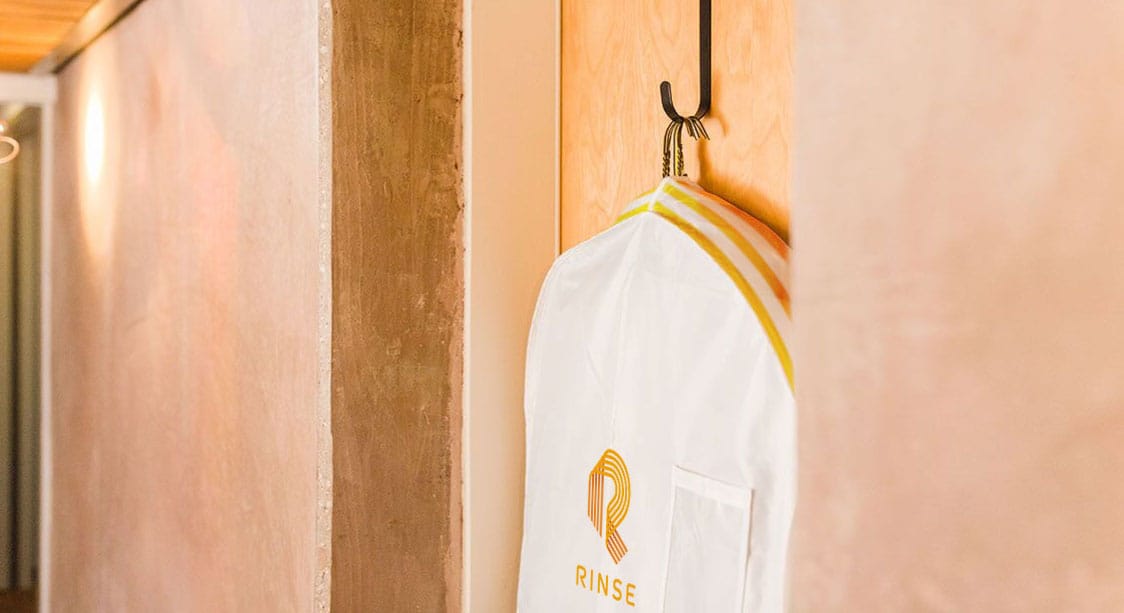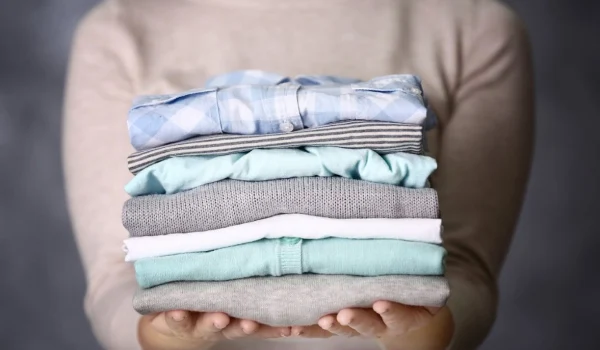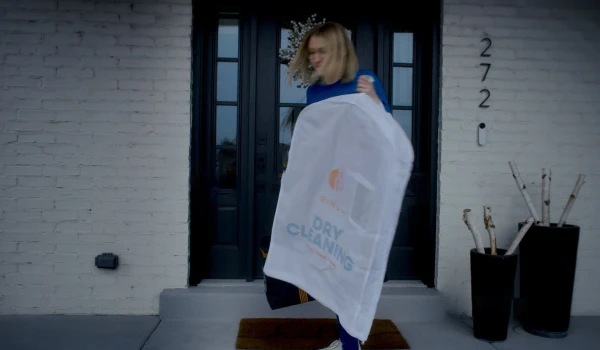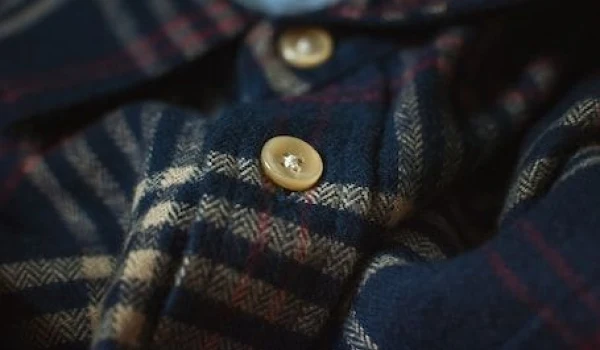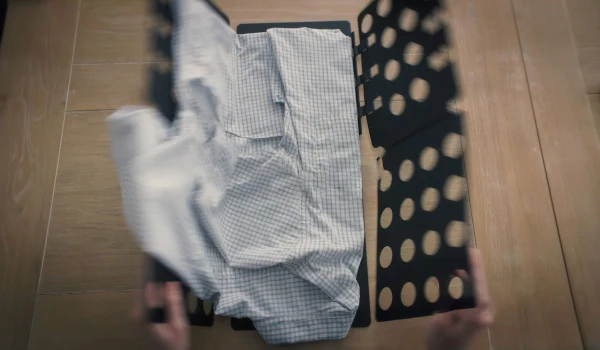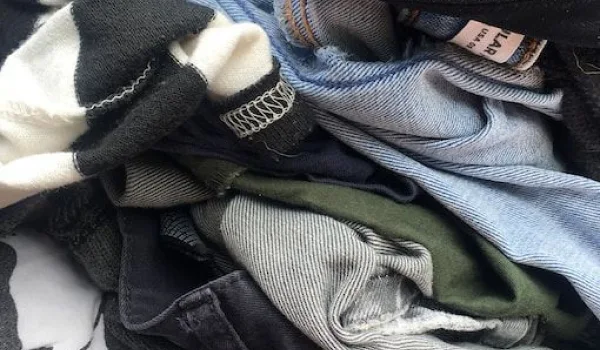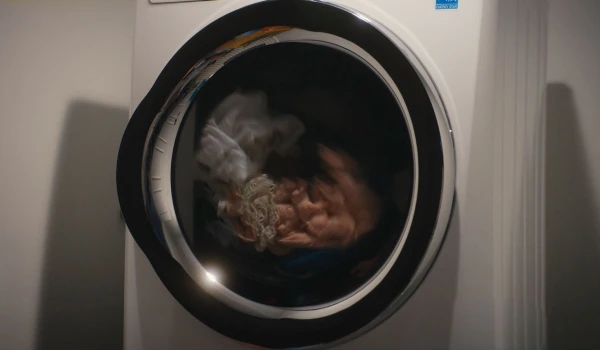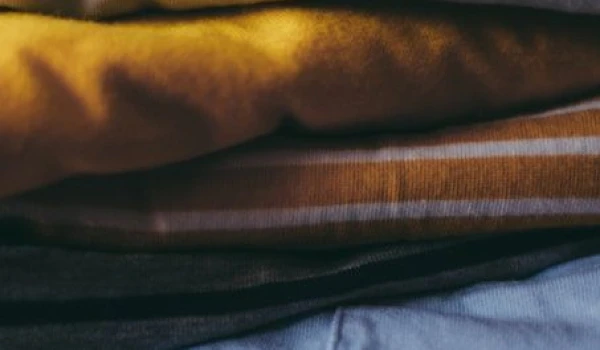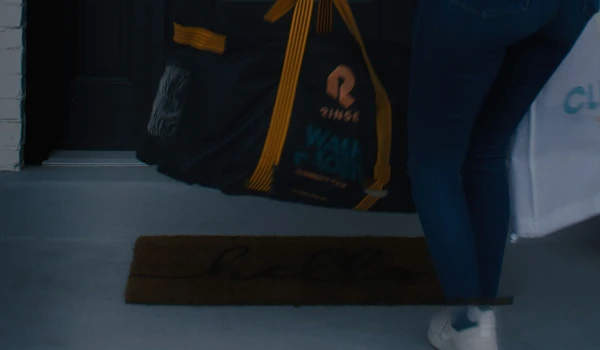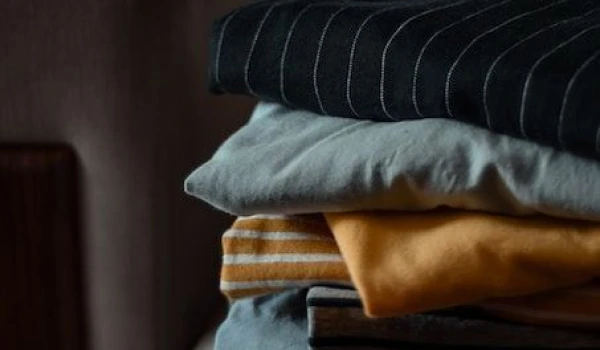Care
Clothing care tips to make your wardrobe last

Care label instructions are critical to extending the life of your clothing. Learn what the different care symbols mean!
Extend the life of your clothes by making sure you're caring for them properly
Below is a chart of all of the laundry care symbols that you may see on your clothing's tags. Some laundry symbols are straight forward while others look like alien hieroglyphics so we put them all in one place to make life easy. For more details on the reason behind each of the care instructions - like why wool can't go in the dryer - check out our Guide to Clothing Care Labels.
Washing Symbols
The washing symbols are used to intruct you how to wash the clothing item.
The tub icon lets you know exactly how to wash the garment with underscored lines indicating the recommended cycle and black dots representing water temperature. An X, of course, warns to not machine wash at all.
The washing symbols can also give you an idea for temperature, indicated by the number of dots in the tub of water symbol, whereas different cycle types are represented by a tub with one or two lines drawn under it.
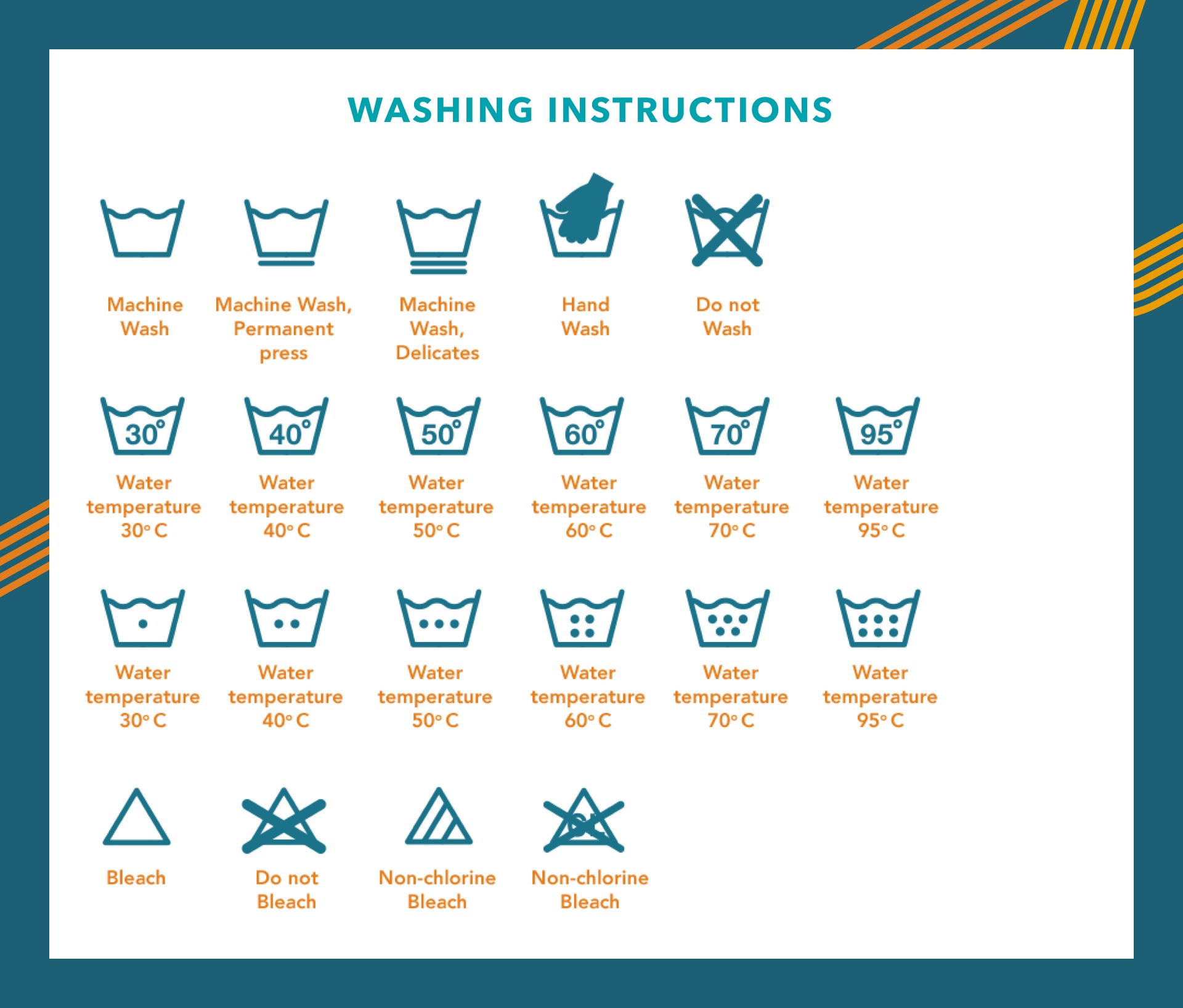
Ironing Symbols
Ironing symbols will recommend exactly how to iron your clothing. The black dots inside the iron symbol represent the temperature, while an X over the iron means you should not iron the garment.
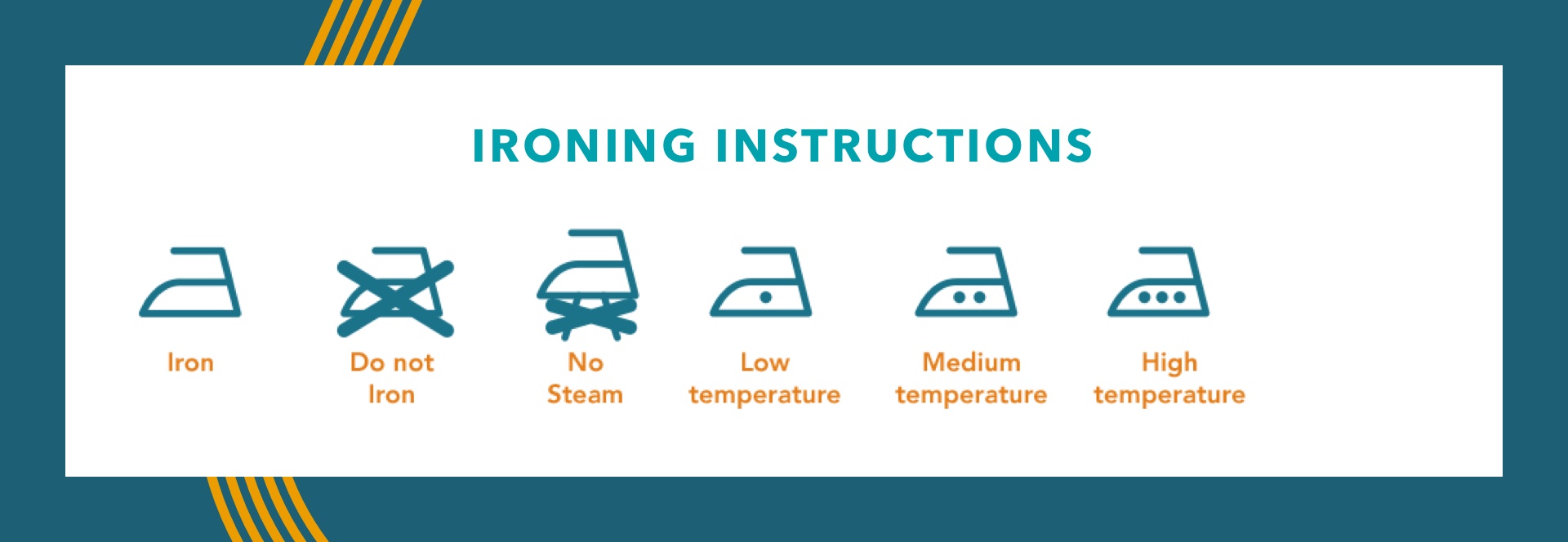
Drying Symbols
For drying symbols, first determine whether the item should be air or tumble dried. The lines inside the square will tell you how an item should be air dried, while the dots inside the square indicate the recommended heat setting if you are using a machine to dry your clothes.
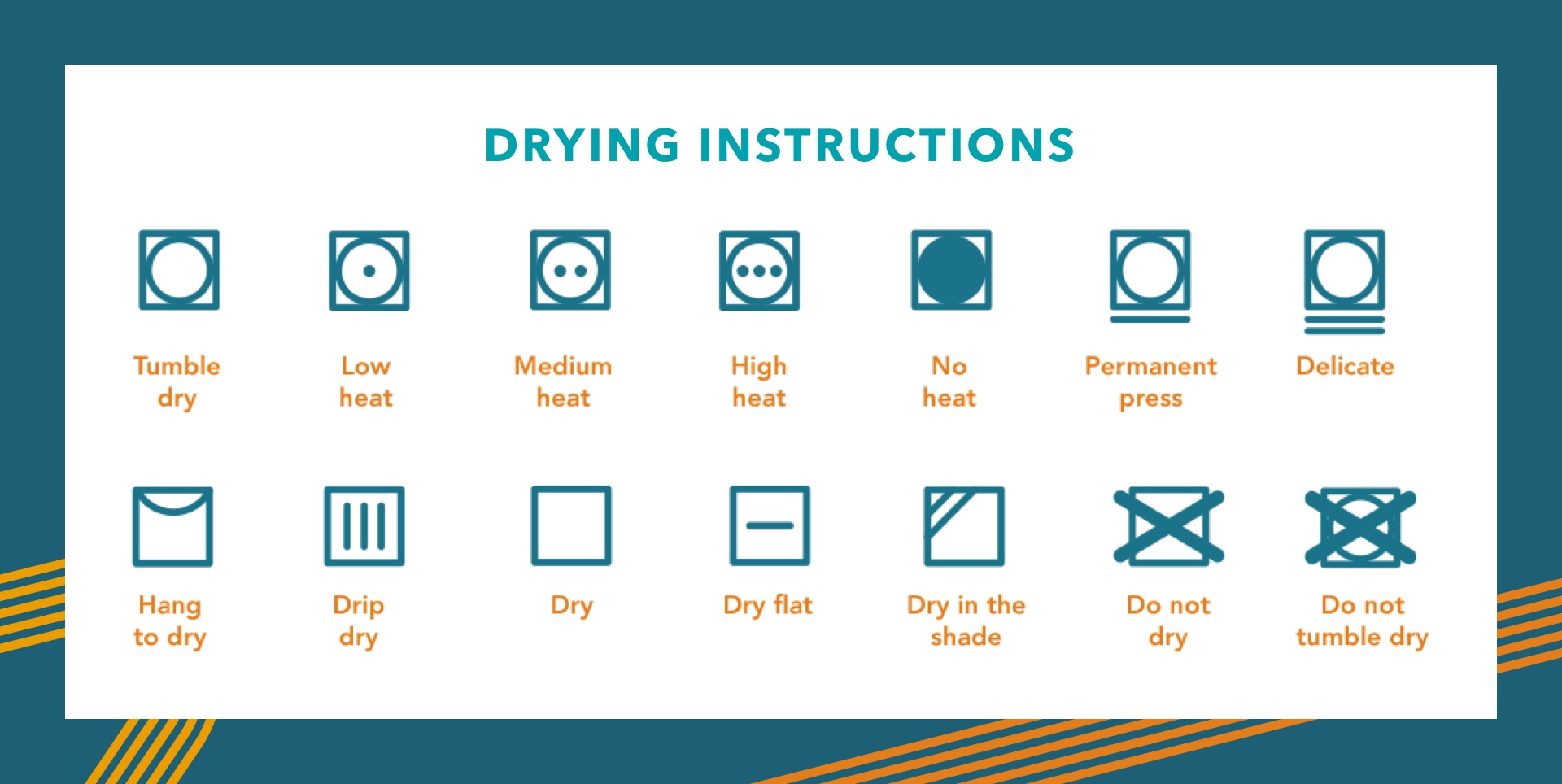
Dry Cleaning Symbols
Relative to the other symbols, dry cleaning symbols are a little easier to understand. They will help you determine if an item should or should not be dry cleaned or if you should opt for a wet cleaning.

Now that you know what your clothes' laundry symbols mean, you'll have a better chance of not shrinking or damaging your clothes. When it comes to clothing maintenance, the fine print matters. If you're pressed for time or unsure of specific treatment requirements, consider scheduling a Rinse laundry pickup and let us take the guesswork out of your laundry.
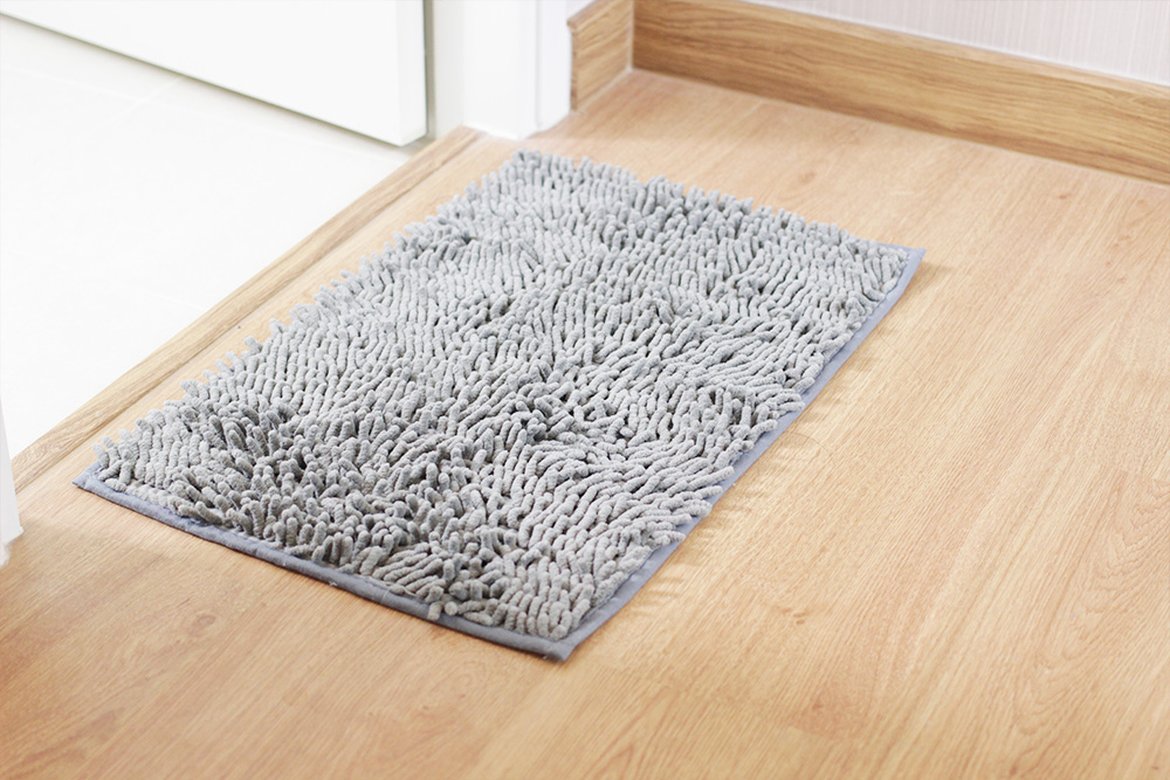
Do you remember to wash your bath mats? They are easy to overlook but you may be surprised why you should start cleaning them more often.
Rinse’s complete guide to properly caring for your bath mats.
Sure, your bath mat probably feels nice and soft on your feet after every shower, but underneath all that comfort may be some pretty gnarly grime and not-so-nice germs.
Before you add burn bathmat to your to-do list, I recommend at least skimming this post. Just as with bed sheets and clothing, there is a correct way to care for your bath mat so that it stays fresh and clean, shower after shower.
Caring for your bath mats in 3 steps
So what can be done to care for your bath mats?
- Determine how much use your bathmat gets - The condition of your bath mat really comes down to how much you use it.
- If you’re like most people, you are using it daily. If you share a bathroom with more than one person you then have to factor in their daily usage in addition to yours.
- You also need to consider the time in between each use where your bath mat can dry and air out. The more it is used and the less time it has to dry the more likely your bath mat has unseen dirt, germs, and even mold or mildew settling in!
- Wash your bath mats accordingly - This answer to how often you should wash your bath mats can be subjective and a bit complicated. To make things simple, a good rule of thumb is to wash your bath mat at least once per week.
- If you find yourself in a household that shares a bathroom between two or more people, then we suggest washing your bath mats every 3 to 5 days.
- If you have your own bathroom, you may be able to get away with washing your bath mats about every 10 days to prevent mold or mildew build up underneath the fabric.
- Minimize long-term moisture - It’s important to create an environment that allows your bathmats to fully dry.
- Turn on your bathroom’s fan or open a window during and after showers. Why? Because adding a little ventilation to your bathroom helps cut down on the steam buildup, which can seep into both soft (read:bathmats) and hard surfaces, making your bathroom a tropical paradise for mold spores, bacteria, and other unpleasant things.
- When you are done using your bath mat, hang it up! Exposing both sides of the bath mat to the light of day will help it dry more quickly and reduce the risk of mold and mildew.
Like most things related to laundry, we have an easy solution for you. If you have regular laundry to do (like most non-nudist adults), our subscription Wash & Fold service, Rinse Repeat, may be just what you need. You just fill up your Rinse Repeat bag with all of your laundry - including bathmats - and we’ll pick it up, wash it, fold it, and deliver it back to you on a weekly or biweekly cadence (depending on your plan).
So, then next time you hop out of the shower, remember your hardworking bath mat and be sure to give it the care it needs!
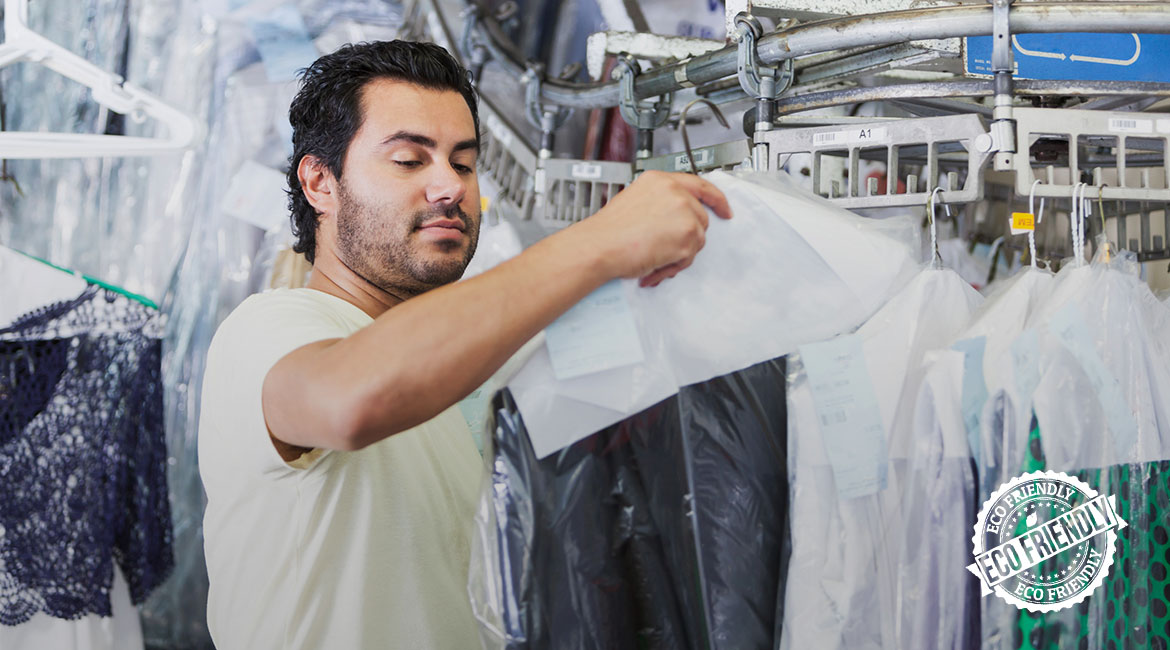
At Rinse, we feel strongly about the care we provide for your clothing. It’s our job! We thoroughly vet all of our cleaning partners to ensure you are receiving the highest-quality care possible.
We feel just as strongly about the environment and the health implications involved with some of the cleaning services we provide. We have a strict policy that all of our cleaning partners use environmentally friendly cleaning processes. The green revolution is the best solution!
What is perc and how am I exposed to it?
Historically, the dry cleaning industry has been known for using the solvent perchloroethylene (“perc”), which is a known carcinogen and potentially hazardous. While we do not partner with any cleaners that use perc we believe it is important for us to provide you with further insight on perc and green dry cleaning.
If your clothes are being cleaned at a dry cleaner that uses perc you most likely are exposed to it through inhalation or skin exposure. Common side effects include dizziness, headaches, drowsiness, nausea, and skin and respiratory irritation.
Yikes! Needless to say, it is important to find out if your dry cleaner is using perc or not.
Going green!
The majority of our cleaners offer a hydrocarbon-based solvent, which is one of the preferred alternatives to perc. This type of solvent is non-toxic, has no documented risk of causing cancer, and is environmentally safe.
Many cleaners outside California still use perc and our decision to work with non-perc cleaners everywhere is accelerating much-needed change in the industry.
If all of this talk about toxic solvents has you a bit worried about dry cleaning your clothes there may be an alternative for you. Wet cleaning!
What is wet cleaning?
Wet cleaning is a water-based alternative to dry cleaning that is safe for use on dry-clean-only items. It uses special machinery to maintain the size of the garment and feel of the fabric while cleaning the garment with water and detergents. We only work with cleaning partners who have demonstrated a great quality and consistency in the wet cleaning process.
It is recommended for water-soluble stains on dry-clean only materials since it will have greater cleaning efficacy while maintaining the look and feel of the fabric. However, we do not recommend wet cleaning for all your dry-clean-only clothes. In summary, it is both safer for you (our customers) and the environment to go green and avoid perc.
We strongly suggest that you find out if your current dry cleaner is using perc or not. Or just schedule a pickup with us and we’ll make sure your items are cleaned using environmentally friendly cleaning processes. We guarantee it!
If you are still hesitant don’t just take it from us. Here is a “Smart Science” segment on green dry cleaning from who else? That’s right! The Weather Channel.

Wine, turkey, and all the fixings pose a big stain risk. Learn how to prepare for any potential stains that may occur while eating during this year's Thanksgiving.
Whether your annual Thanksgiving dinner is smooth sailing or full of cringe-worthy questions from the family, such as when are you getting married? Have you thought about kids? We can all agree on one thing. We always enjoy the delicious food and quality time spent with family and friends!
What we don't enjoy are any stains from accidental (or maybe not so accidental) spills that may occur while eating.
If this happens the best thing to do is to schedule a Rinse. Seriously! Turning over your stained items to garment care professionals is one of the best things you can do if you want to properly treat stains and have your items looking new again.
But much like you, we (and our vendors) enjoy a break once and awhile and we are not available for pickups on Thanksgiving. Don’t worry we have compiled a few helpful tips for dealing with stains this holiday!
- After you spill anything the best thing to do is to immediately wipe off the stain (gently), making sure to not use downward pressure as it may accelerate “setting” the stain.
- If it is an oil stain water only makes things worse so it is best to avoid using water when wiping oil stains.
- Food stains are complex. They are often are a mixture of water-soluble and non-water soluble stains and organic material, which is best taken care of via pre-spotting and then dry cleaning.
- Butter Stains: Like most stains the key is to deal with butter stains fast. Salt is useful in absorbing the grease while the stain is still fresh and helps prevent the stain from soaking deeper into the fabric.
- Gravy Stains: One suggestion we have is to carefully apply laundry prewash product and soak the soiled linen overnight in the washing machine using warm water with enzyme detergent and all-fabric bleach. The next day, be sure to drain the washer and start a new cycle using the hottest water setting and the type of bleach that is safe for the soiled fabric.
- Cranberry Stains: First, try and scoop or scrape the excess cranberry with a utensil and sponge using a little cool water. You can then mix 1 tablespoon of white vinegar and ½ teaspoon of liquid laundry detergent into 1 quart of cool water. Soak the stained item in this for about 15 minutes. Rinse and dab the soiled fabric with rubbing alcohol if the stain still remains. Lastly, launder the soiled fabric as you normally would with a small amount of bleach added if you have it.
No matter what you’re eating this Thanksgiving take a moment to be grateful and enjoy the much needed break and time spent with loved ones!
Happy Thanksgiving and Happy Rinsing!

How Often Should You Wash Your Sheets and Why?
Keeping your bed sheets, pillowcases, and other bedding items clean is crucial for both comfort and health. Considering that we spend nearly a third of our lives in bed, maintaining a fresh sleeping environment is essential. However, many people underestimate the importance of regularly washing their sheets, comforters, and duvet covers. This article will guide you on how often to wash these items, why it’s important, and best practices to keep your bedding clean and hygienic. And if you're a hotel or other lodging partner, check out our guide here that lists our best cleaning tips for hotels.
The General Rule: For optimal cleanliness, it’s recommended to wash your bed sheets and pillowcases at least once a week. If you have a busy lifestyle, use a comforter or duvet cover without washing it regularly, or if you have allergies, consider washing your sheets more frequently. This routine helps remove the buildup of dead skin cells, sweat, and other particles that accumulate over time. To learn more about specific bedding items, read our guides on how often you should wash your towels, comforters, or sleeping bags.
Factors Affecting Washing Frequency: The frequency of washing can vary depending on personal habits, whether you sleep with pets, and if you have conditions like asthma or eczema. Regular washing also keeps your cotton sheets, linen sheets, and other types of bed sheets in good condition, extending their lifespan and ensuring a cleaner sleep environment
Dead Skin Cells
Every night, our bodies shed millions of dead skin cells, which can accumulate on our bed sheets, comforters, and duvet covers. These skin cells provide food for dust mites, which thrive in warm, humid environments like your bed. Regular washing helps remove these dead skin cells, reducing the population of dust mites and minimizing the risk of allergies.
Dust Mites
Dust mites are microscopic creatures that inhabit bedding and feed on dead skin cells. These mites can trigger allergy symptoms such as sneezing, runny nose, and itchy eyes, and can exacerbate asthma. Washing your bed sheets, pillowcases, and duvet covers in hot water can help eliminate dust mites and their allergens.
Crumbs
Eating in bed can leave crumbs and food particles in your sheets, comforters, and mattress. These crumbs can attract insects and lead to bacterial growth, creating an unhygienic sleeping environment. Washing your bed sheets regularly ensures that your bed remains clean and free from pests.
Beauty Products Residue
If you apply lotions, oils, or other beauty products before bed, they can leave residue on your bed sheets and pillowcases. Over time, these residues can build up, potentially clogging pores and causing skin irritation. Regularly washing your sheets and pillowcases can help remove these residues, keeping your skin healthy and your bedding fresh.
Pet-Related Germs
If your pets share your bed, they can bring fur, dander, dirt, and possibly even parasites like fleas or ticks onto your sheets, duvet covers, and mattress. This not only leads to an unsanitary sleeping environment but can also worsen allergies. Regularly washing your bedding, including comforters and duvets, can help mitigate these issues and ensure a cleaner sleep space.

What Can Happen if I Don’t Wash My Sheets?
Failing to wash your sheets, pillowcases, and other bedding items regularly can lead to several negative consequences:
-
Skin Problems: Dirty sheets can lead to skin irritation, rashes, and exacerbate conditions like eczema. The buildup of sweat, oils, and bacteria can clog pores and lead to breakouts.
-
Allergies and Asthma: Dust mites and their droppings are common allergens that can trigger asthma attacks and allergic reactions. Regular washing helps keep these allergens in check.
-
Bad Odors: Sweat, oils, and bacteria can cause your sheets to develop an unpleasant odor over time. Freshly washed sheets not only feel better but also smell clean and inviting.
-
Increased Risk of Infections: Sleeping on dirty sheets increases the likelihood of skin infections and other health issues, especially if you have any cuts or open wounds. If you are sick, make sure to follow best practices of washing sheets after an illness.

Best Practices for Washing Bed Sheets
Washing your linens properly is just as important as washing them regularly. Here are some best practices to ensure your bed sheets are thoroughly cleaned and well-maintained:
Wash Your Sheets Separately
Sheets take up a lot of space in the washing machine, and washing them separately ensures that they get properly cleaned without getting tangled up in other items. If you do need to wash other items with your sheets, make sure they are lightweight and similar in color to avoid color bleeding.
Cycle Depends on Dirt
Choose the appropriate washing cycle based on how dirty your bed sheets are. For lightly soiled sheets, a normal cycle will suffice. For heavily soiled sheets or those with stains, opt for a heavy-duty cycle to ensure thorough cleaning. Always check the care label on your sheets, duvet covers, and pillowcases for specific washing instructions.
Cold or Warm Water?
While white and light-colored sheets can generally be washed in any water temperature, it's advisable to use warm water during cold and flu season to help eliminate bacteria. Dark-colored sheets should be washed in cold water to prevent fading and preserve their color. If you’re washing a duvet cover, bed sheet, or a dry sheet, always follow the care label to ensure the best results.
Treat Stains Before Washing
Pre-treat any stains on your sheets before washing. Apply a stain remover or a mixture of detergent and water directly to the stained area and let it sit for a few minutes before washing. This helps to lift the stain and ensure your sheets come out clean and fresh.
Avoid Using Fabric Softeners
Fabric softeners can leave a residue on your sheets that builds up over time, reducing their absorbency and potentially irritating your skin. Instead, consider using a cup of white vinegar in the rinse cycle as a natural fabric softener alternative. This keeps your linen sheets and cotton sheets feeling soft and fresh without the chemical buildup.
Dry on Low
High heat can damage the fibers of your sheets, leading to wear and tear over time. It's best to dry your sheets on a low heat setting to extend their lifespan. If possible, remove them from the dryer while still slightly damp to prevent wrinkles and make folding easier.

Easy, Just Schedule a Rinse!
Keeping your sheets and bedding clean is essential for your health and comfort. However, we understand that maintaining a regular laundry routine can be challenging, especially with a busy schedule. That's where Rinse comes in!
Rinse offers convenient laundry and dry-cleaning services that take the hassle out of laundry day. Simply schedule a pickup, and our friendly Valets will collect your items, have them cleaned by our expert partners, and deliver them back to your door, often by the next day. We handle everything from your everyday bed sheets and linens to larger items like comforters.
Contact us at Rinse today to see our skill in action.

Learn why some clothes are not meant to be put in the dryer.
We all have a least one article of clothing with a care label that says "Hang to Dry." Most of us have probably thought at one time or another, do I really have to? And weighed the risk of throwing that piece in the dryer along with the rest of the laundry.
Well, for all you who want to avoid turning your favorite pieces into doll clothes, here is a guide on why you should hang dry certain garments and how to do it properly so your clothes continue to last and look great.
Why Hang Dry?
Hanging clothes to dry helps to avoid the heat damage that can be caused by traditional dryers.
Delicate fabrics, such as those used in activewear, underwear, and jeans, can lose their shape and fit due to the harsh tumbling and heat of the dryer. By air drying your clothes on a clothesline or laying them out to dry on a flat surface, you can help your clothes maintain the same fit and form they had when you first bought them.
A good rule of thumb: If your garment is made of synthetics, wool, or lace - double check the clothing label to see if it’s a hang dry items.
How To Properly Hang Dry:
Check the care label and wash your clothes accordingly. The clothing label will direct you on the best method, be it a machine washer or by hand with hot, warm, or cold water. If you’re unsure what those comically unintuitive care symbols mean, you can reference our handy laundry symbol guide.
At Rinse, we always follow the care label on your clothing. It's just another reason why we're the most trusted brand in clothing care. Try our Hang Dry service and experience our quality cleaning and exceptional customer service for yourself.
Hanging your clothes outside on a clothing line? Follow these tips:
- Pants: Hang your pants upside down. Make sure to match the inner leg seams of the pants, and then place the clothespins on the hems while attaching it to the clothesline.
- Shirts and tops: Also hang these upsides down. Place the clothespins at opposite ends of the bottom hem of the shirt or top, and pin to the clothesline.
- Socks: Hang socks in pairs and upside down. Attach the clothespin to the toe area of the sock and let the top part of the sock hang down.
- Bed linens: Since sheets and blankets can take up a lot of space on the clothesline, you should fold them in half and pin each end to the clothesline.
- Underwear and bras: Hang underwear from opposite sides of the upper seams, and bras from their hook end.
Drying your garments inside? Tips to help them dry quicker and look their best:
- Make sure to lay your clothes on a flat surface when air-drying garments inside.
- Be sure to leave some room between garments to allow air to circulate between them. (A wet pile of clothes is a wet pile of clothes whether you carefully created that pile or not. The key to successful air-drying is ventilation).
- Place your clothes near a window, vent, air-conditioner, or a fan to speed up the drying process.
- Don’t have enough space to lay everything flat to dry? No problem - the key is prioritization.
- Sweaters and other garments made from heavy or stretchy material should always be laid flat to dry.
- Other types of garments like yoga pants, swimsuits, jeans, etc can be hung inside using hangers or a drying rack.
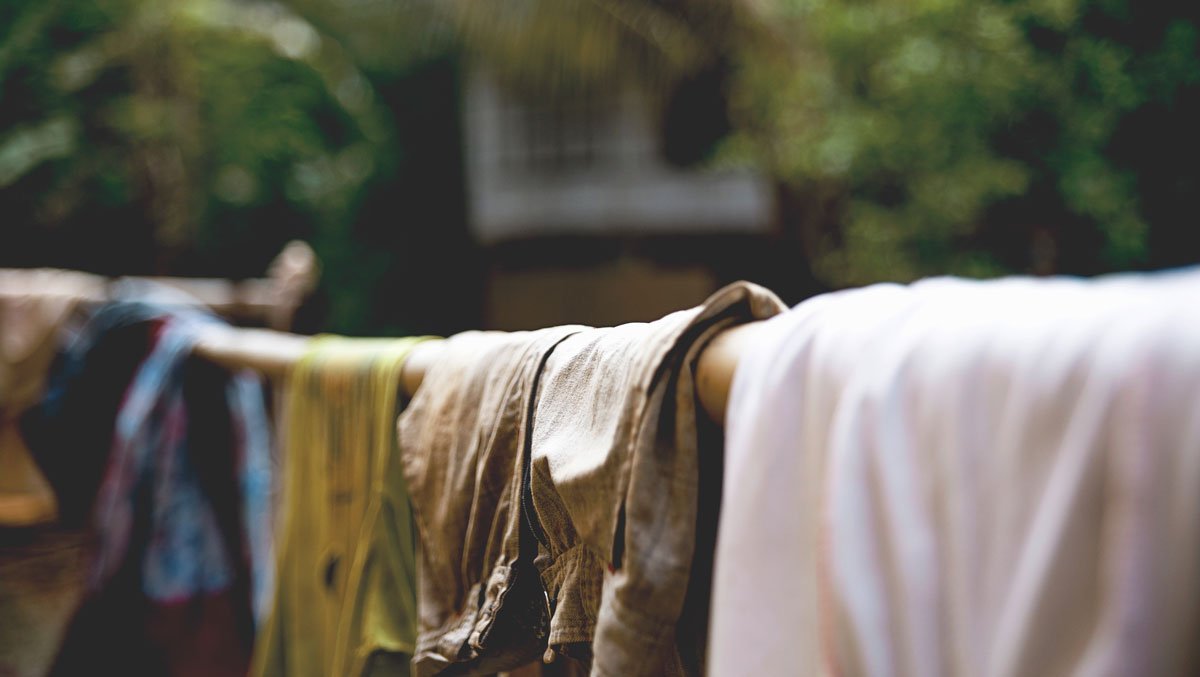
Hanging your clothes may take more time and effort than the traditional dryer, but it can help some of your favorite garments last a lot longer and stay looking as great as the day you bought them.
Topics
Rinse Drop
We offer pickup and delivery if you can’t be present between 8pm and 10pm.
Our Valet will pick up or deliver your order to your doorstep or concierge, at which point you’ll receive a text with a photo showing where your items were left.
You can enable Rinse Drop on any (or all) of your orders.

